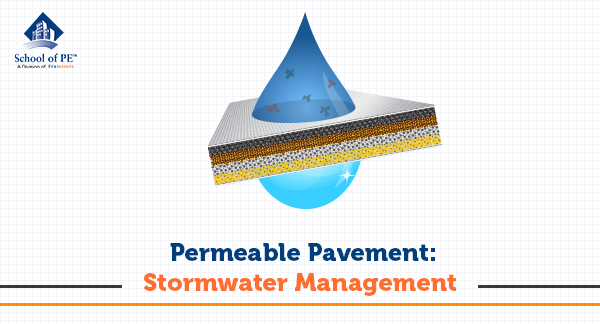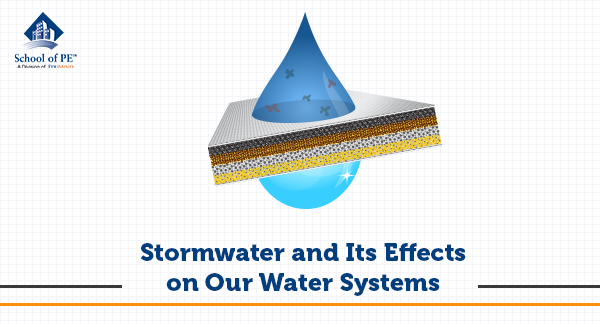Stormwater is a major source of pollution in urban areas. When rain falls onto impervious surfaces (roofs, roads, and parking lots), stormwater drains into sewers and is discharged into water systems carrying pollutants (like oil, trash, and bacteria) with it. These impacts are long lasting and damaging to the environment. However, this is not true for undeveloped areas, where rainfall is infiltrated in the soil and soaked up by plants through evapotranspiration. In such an environment, stormwater is much cleaner and has less of an environmental impact. As a result, green infrastructure was introduced into urban areas as an approach to manage the impacts of stormwater runoff. Section 502 of the Clean Water Act defines green infrastructure as “…the range of measures that use plant or soil systems, permeable pavements or other permeable surfaces or substrates, stormwater harvest and reuse, or landscaping to store, infiltrate, or evapotranspirate stormwater and reduce flows to sewer systems or to surface waters.” In essence, green infrastructure reduces and treats stormwater at its source.
Permeable pavements are considered to be an effective, resilient approach to managing excess stormwater runoff. Permeable pavements such as pervious asphalt, pervious concrete, interlocking pavers, and plastic grid pavers infiltrate, treat, and/or store stormwater. Some of these systems are designed to carry stormwater and discharge offsite using perforated pipes. Permeable pavements help reduce the need for road salts used for deicing, restore groundwater supplies, and reduce construction costs by limiting the need for traditional drainage structures.
Although permeable pavements provide great benefits as a low impact to the environment; there are limitations to this method. Permeable pavements have a high potential for clogging, dirt, and debris because of the high void space within the pavement system. Special maintenance measures would be required, such as vacuuming or high-pressure washing. There are also great variations from traditional construction practices. The vast majority of permeable pavement projects are designed to carry light vehicular traffic. These are recommended for low-volume roadways, parking lots, pedestrian walkways, sidewalks, driveways, bike lanes, and shoulders. It is often a challenge to use these types of pavements for highways due to varying soil conditions, utilities, fills, and slopes. However, with good engineering design, permeable pavements are possible for roads with heavier traffic loading.
There are three major design considerations for permeable pavement: 1) site design considerations to ensure that the site is acceptable for this method; 2) hydrologic design to ensure that the permeable pavement will meet the stormwater runoff needs; and 3) structural design to ensure that the permeable pavement will meet the traffic loading demands. Additional site considerations include soil types, depth to bedrock, pavement slopes, and other sources of runoff. The hydrologic design determines the layer thickness requirements that will infiltrate, store, and release the expected water. This requires knowledge of the subgrade permeability and rainfall intensity data. Typically, structural design of permeable pavements is for light loading. For those requiring heaving traffic loading, the 93 AASHTO design procedures should be used as well as incorporating some traditional pavement methods.






